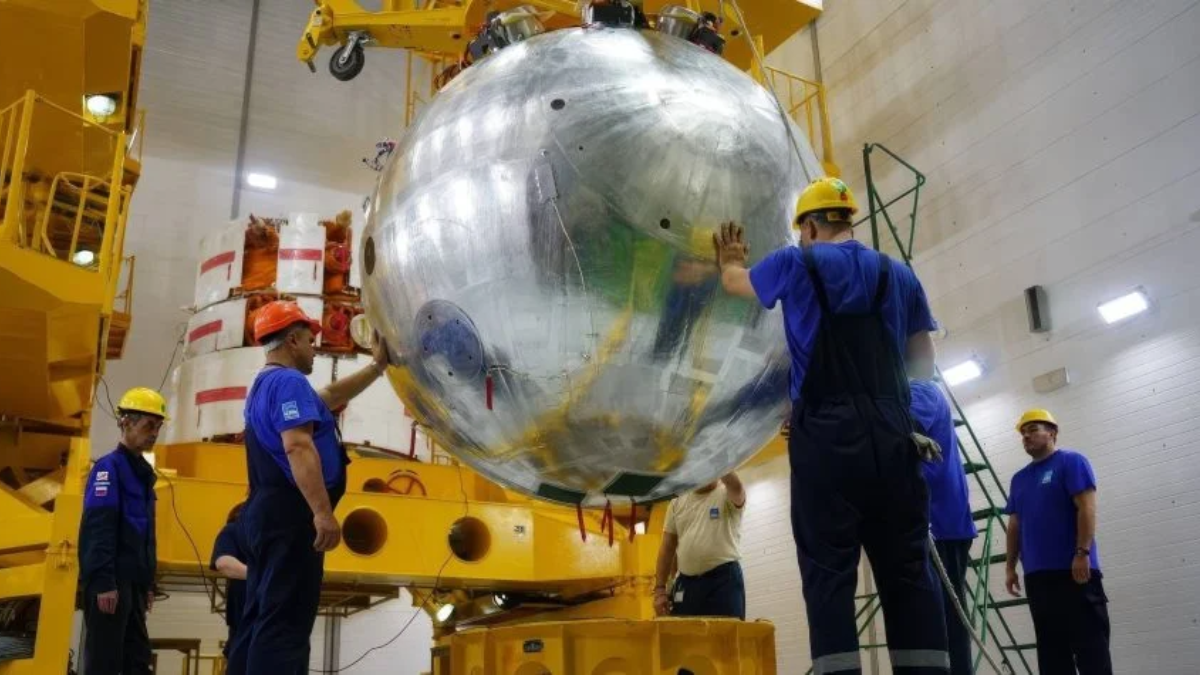Russia is preparing to launch a unique space mission on August 20 to study the effects of space on living beings. The Bion-M No. 2 mission involves sending 75 mice, 1,000 fruit flies, and other biological samples into Earth orbit on a “miniature Noah’s Ark” to gather data on the impact of cosmic radiation. This project, led by Roscosmos, Russia’s space agency, and the Institute of Medical and Biological Problems (IMBP), is expected to pave the way for future human missions to the Moon and Mars.
💫 What use is Bion-M No. 2 biosatellite?@roscosmos, jointly with the Institute of Biomedical Problems of the Russian Academy of Sciences, is sending an unusual crew into a 370-km altitude orbit.
🐁 On board are 75 mice, fruit flies, plants, microorganisms and ants. Over 30… pic.twitter.com/l9omNenKot
— Russian Embassy in South Africa 🇷🇺 (@EmbassyofRussia) August 13, 2025
The Bion-M No. 2 biosatellite will carry its diverse passengers — mice, fruit flies, plant seeds, algae, microorganisms, and cell cultures — into a 30-day orbit around Earth, exposing them to radiation levels about 30% higher than those experienced on the International Space Station (ISS), Roscosmos revealed in a Telegram post.
More photos of #BionM №2 by Ivan Timoshenko: https://t.co/VxyGST9LEe pic.twitter.com/hFI7G4TRUu
— Katya Pavlushchenko (@katlinegrey) August 18, 2025
This high-radiation environment makes the mission a critical step in understanding the challenges of long-distance space travel. The spacecraft, launching from Baikonur Cosmodrome in Kazakhstan on a Soyuz-2.1b rocket, will follow a near-circular, pole-to-pole orbit to maximise radiation exposure.
ALSO SEE: Scientists Accidentally Created The Cutest Mouse In The World
Un’ ‘Arca di Noè’ in miniatura è pronta per essere lanciata nello spazio.
Bion-M No. 2 è il biosatellite di @roscosmos che studierà gli effetti della microgravità su organismi viventi esposti alle radiazioni cosmiche.
Scopri di più su Global Science https://t.co/Ht6OAd14Gl pic.twitter.com/oBfWHq1lc0
— Agenzia Spaziale ITA (@ASI_spazio) August 18, 2025
The mice will be housed in a specialised ‘miniature hotel’ equipped with lighting, ventilation, feeding, and waste systems. Four modules will provide a paste-like food that supports hydration, while a fifth offers dry food and gelled water for select mice. Cameras, sensors, and implanted chips will monitor the mice’s hormones, immune systems, and metabolism, providing real-time data on how space affects their bodies.
To compare the effects, researchers will study three groups of mice — one in space, one on Earth in similar flight hardware, and one in normal Earth conditions. “Some rodents will be implanted with chips to allow for individual monitoring,” stated the Italian Space Agency, which is also a partner in this mission. “Once back on Earth, the animals will be analyzed to study their endurance for spaceflight and adaptation to microgravity.” Fruit flies, with their well-mapped genes and rapid life cycles, will complement the mice studies, offering insights into how radiation impacts simpler organisms.
The mission also includes lunar simulants — materials mimicking the Moon’s surface — to examine how space radiation and vacuum conditions affect potential construction materials for future lunar bases. This experiment, developed by the Vernadsky Institute of Geochemistry and Analytical Chemistry alongside IMBP, could support the development of lunar habitats, bringing humanity closer to sustainable deep-space exploration.
ALSO SEE: Scientists Made Mice Hallucinate Without Drugs In a Trippy Experiment
(Image: Italian Space Agency)
